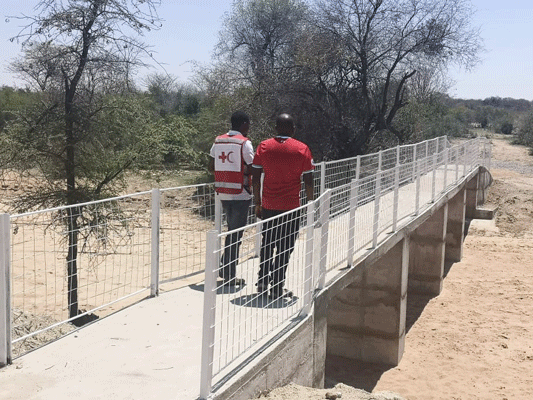
By StYLE Reporter
The Zimbabwe Red Cross Society (ZRCS) projects meant to enhance disaster risk management capacities and community resilience in Mangwe district, Matabeleland South province, are bearing fruit if recent developments in the area are anything to go by.
ZRCS was engaging communities in building their knowledge base and putting in place their own measures to stay safe through a programme that ran under the banner Public Awareness and Public Education.
The project, which was running under the broader title, Resilience through Disaster Response Management: Cash Preparedness and Comprehensive School Safety, was supported by the Finnish Red Cross, British Red Cross, the World Food Programme and the European Commission Humanitarian Aid Office.
As part of the programme, ZRCS identified 10 schools in the district where it was facilitating programmes meant to open up spaces for social participation among community members.
The organisation also set up disaster risk reduction committees in each of the 10 schools chaired by the councillor and deputised by the school head.
“We aim to reduce the risks and the hazards that affect schools and communities here in Mangwe district,” said ZRCS provincial manager for Matabeleland South Siphiwethina Tshuma.
One of the outcomes of the community-driven project was the construction of the Khahlu footbridge in ward 3.
- Chamisa under fire over US$120K donation
- Mavhunga puts DeMbare into Chibuku quarterfinals
- Pension funds bet on Cabora Bassa oilfields
- Councils defy govt fire tender directive
Keep Reading
Mapholisa and Osabeni villagers have for long endured years of suffering, risking drowning as they cross Ngamela River.
“Construction of the bridge was a result of the disaster risk management training of the school [Khahlu] disaster risk reduction committee that was conducted by the ZRCS and the Department of Civil Protection,” Tshuma said.
“We also held school risk assessment involving teachers and pupils which was followed by the drafting of a school disaster risk reduction plan.
“These processes led to understanding of risks and hazards within the community and the footbridge was a prioritisation that came out of their assessment and risk reduction plan.”
Tshuma said the idea of construction the footbridge was prompted by the fact that the bulk of learners at the school come from Mapholisa village where they cross Ngamela.
“We welcome the idea of constructing the footbridge because in most cases when it rained most learners would miss school,” said ward 3 councillor Nkosilathi Khahlu.
The councillor hailed ZRCS for facilitating the construction of the footbridge.
Khahlu Primary School was established in 1959 and then there was free movement of learners from both Zimbabwe and Botswana.
The school has a total enrolment of 458 learners and it is surrounded by three rivers, namely Mkwebana, bordering with Botswana, Ngamela and Maphulula.
More than 350 learners cross Ngamela River where the footbridge was constructed reducing the risk of drowning and missing out on school if the river is flooded.
“The school could not afford to keep the learners at school whenever the river was flooded so the authorities resorted to dismissing the learners if they felt that rains were coming and this destabilised the learning process,” Tshuma said.










